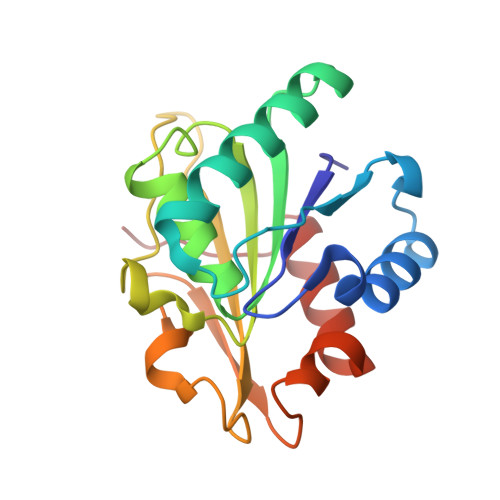Structural basis for the remarkable stability of Bacillus subtilis lipase (Lip A) at low pH
Rajakumara, E., Acharya, P., Ahmad, S., Sankaranaryanan, R., Rao, N.M.(2008) Biochim Biophys Acta 1784: 302-311
- PubMed: 18053819
- DOI: https://doi.org/10.1016/j.bbapap.2007.10.012
- Primary Citation of Related Structures:
2QXT, 2QXU - PubMed Abstract:
Understanding the structural basis of altered properties of proteins due to changes in temperature or pH provides useful insights in designing proteins with improved stability. Here we report the basis for the pH-dependent thermostability of the Bacillus subtilis lipase (Lip A) using spectroscopic and X-ray crystallographic studies. At pH values above 7, lipase denatures and aggregates when heated at temperatures above 45 degrees C. However, at pH below 6 lipase denatures upon heating but the activity and its native structure is completely recovered upon cooling. In order to obtain the structural basis of this unusual stability of lipase, we determined high-resolution crystal structures of the lipase in two different crystal forms at pH 4.5 and 5. These structures show linear oligomerization of lipase using only two types of dimeric associations and these inter-molecular interactions are completely absent in several crystal forms of wild-type and mutant proteins obtained at basic pH. In accordance with the crystallographic studies, spectroscopic investigations reveal an invariant secondary structure in the pH range of 4-10. Quaternary organization of lipase at low pH resulted in changes in the tryptophan environment and binding of 1-anilino-8-naphthalene sulfate (ANS) at low pH. Low pH stability of the lipase is not observed in the presence of sodium chloride (>0.2 M) indicating the importance of ionic interactions at low pH. Inter- and intra-molecular ionic interactions that occur at pH below 6.0 are proposed to trap the molecule in a conformation that allows its complete refolding upon cooling.
Organizational Affiliation:
Centre for Cellular and Molecular Biology, Uppal Road, Hyderabad, 500 007, India.














